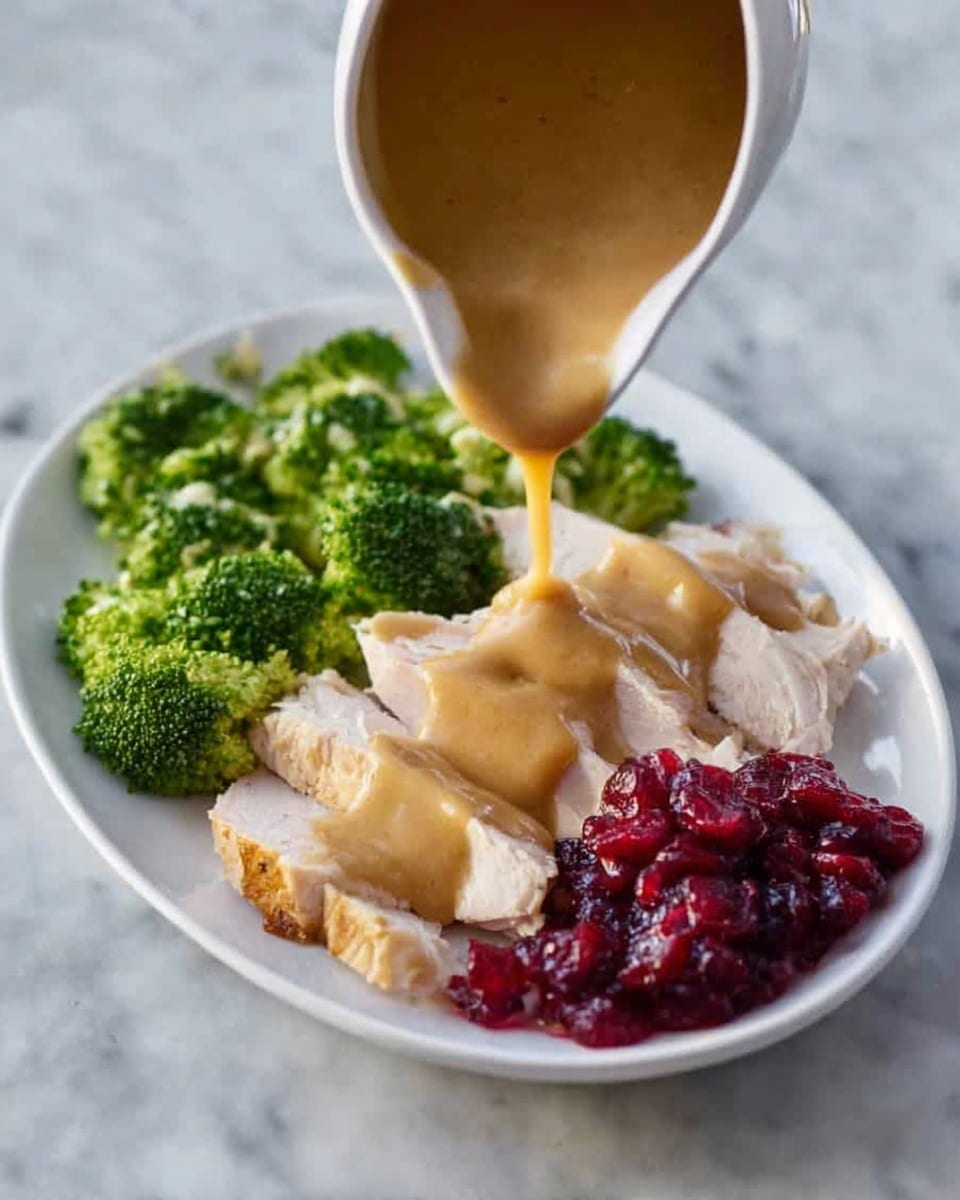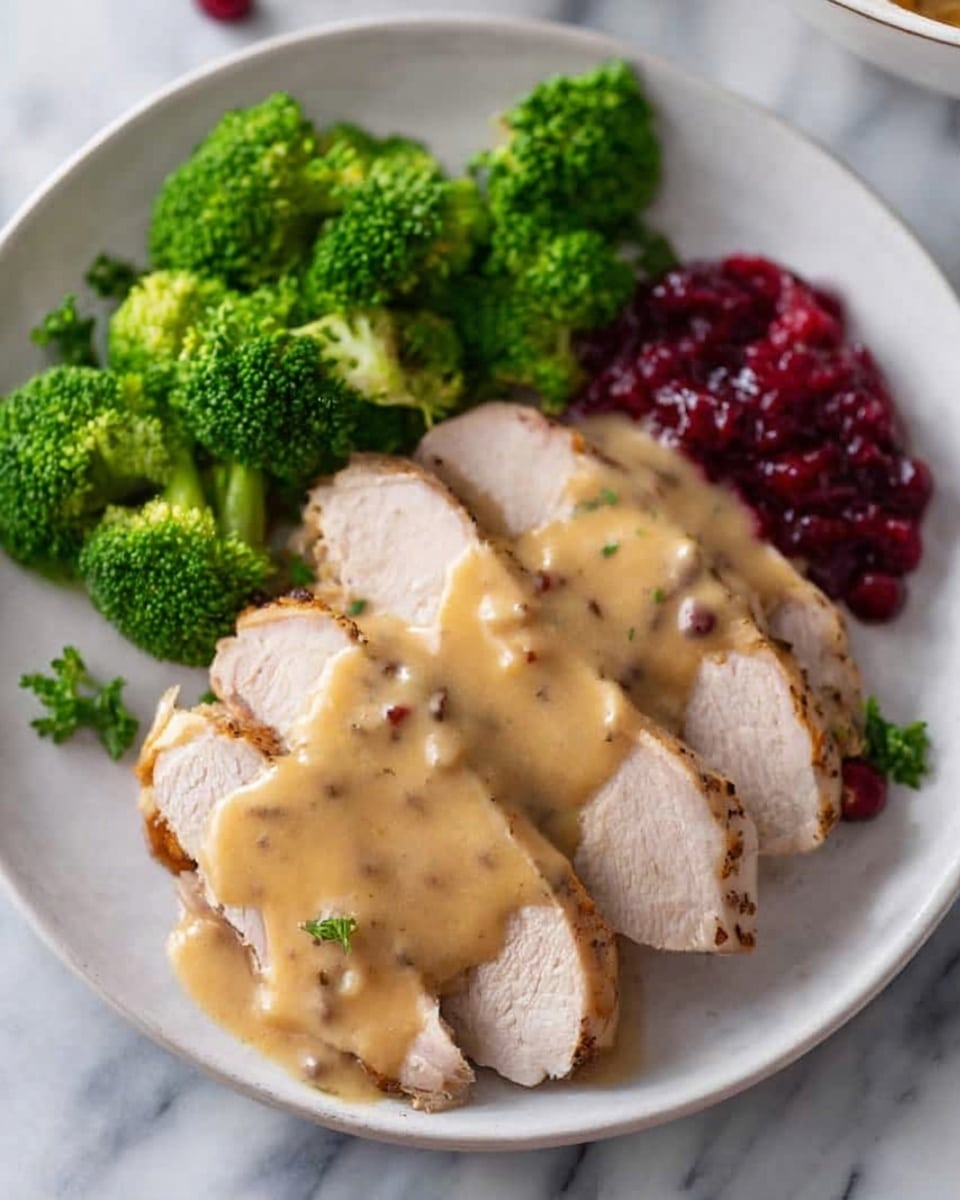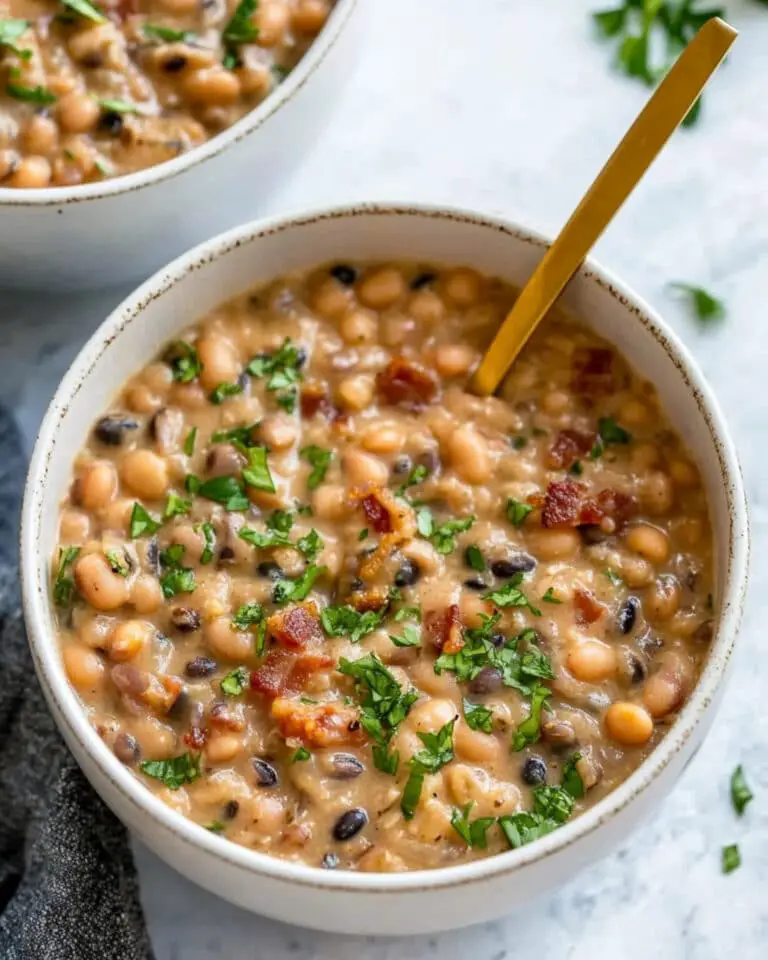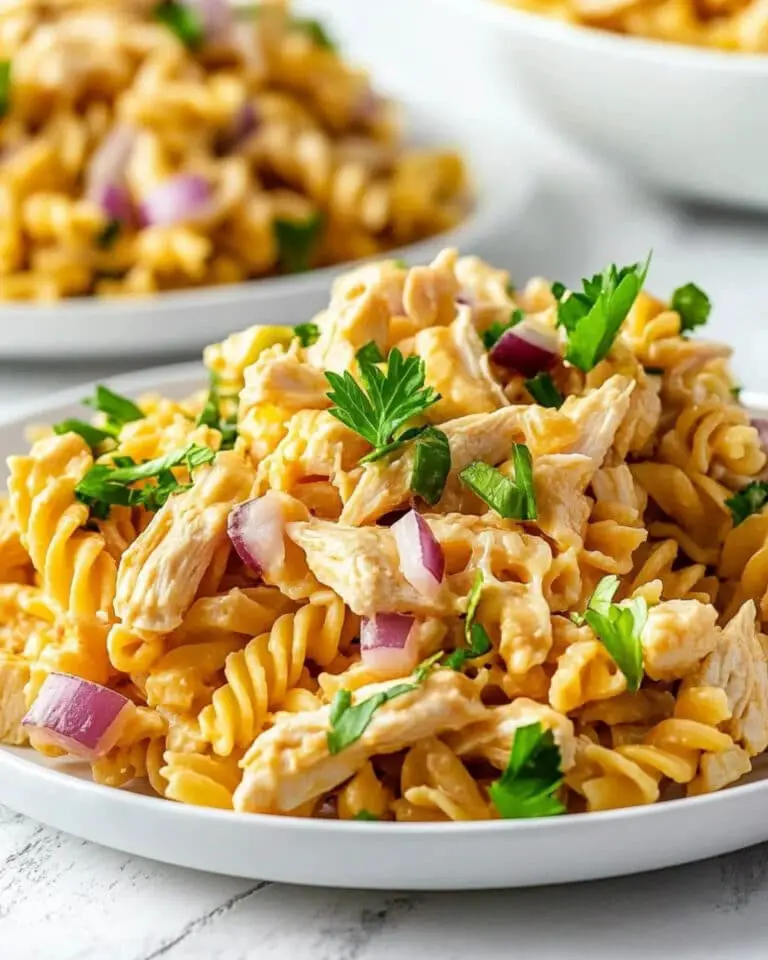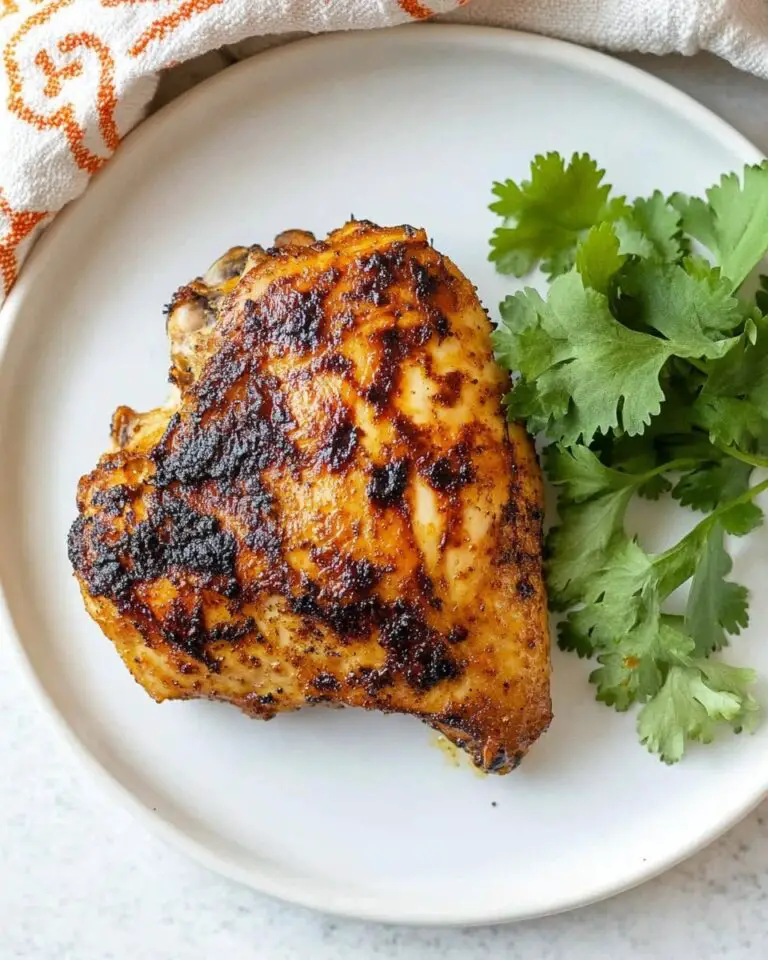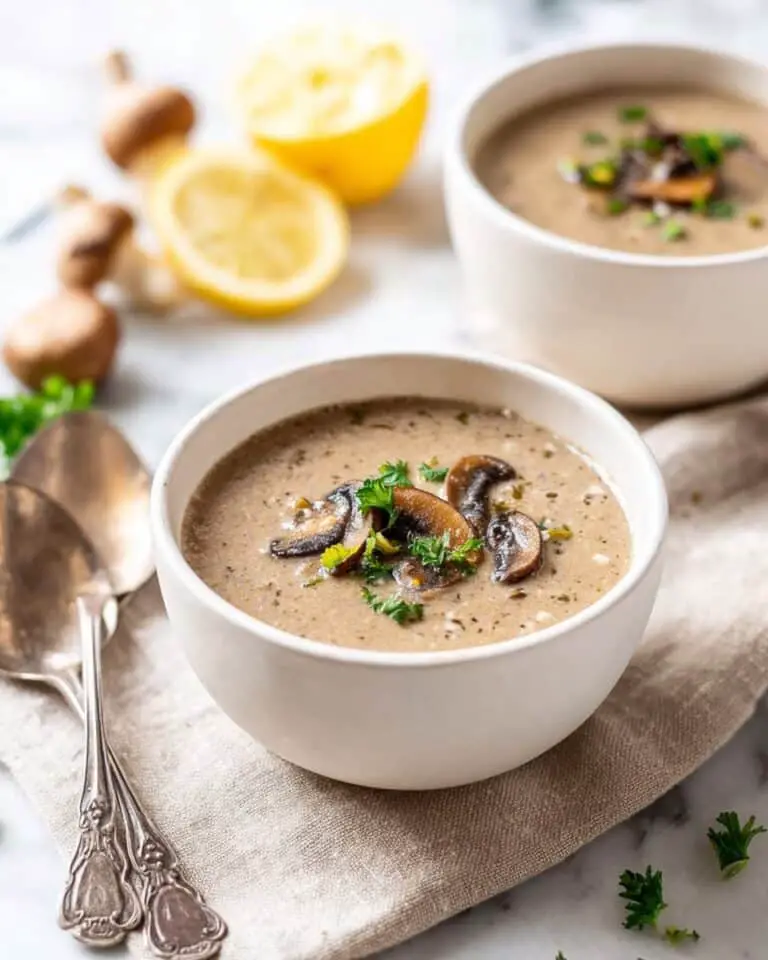If you’re here, you’re probably hunting for the perfect, rich, and savory gravy to crown your roast turkey. Well, you’re in luck because this Turkey Gravy from Roasted Turkey Drippings and Giblets Recipe is genuinely one of my all-time favorites. I love this gravy because it’s packed with deep, comforting flavors you just can’t get from a packet—plus, it’s surprisingly simple to make. Whether you’re cooking for a holiday feast or just want to elevate a weeknight dinner, you’ll find that this recipe brings serious magic to your plate.
Why You’ll Love This Recipe
- Deep, Authentic Flavor: Using both turkey drippings and giblets infuses the gravy with rich, homemade goodness you can’t replicate with store-bought sauces.
- Simple Ingredients: You don’t need a pantry full of fancy items—just basics like flour, broth, and the turkey parts you already have.
- Customizable Texture: Like your gravy thicker or thinner? I’ve got tips so you can tweak it just the way you like.
- Perfect for Holidays and Everyday: This gravy becomes the star on festive tables and adds comfort to any meal.
Ingredients You’ll Need
The ingredients here are straightforward but mighty — each one plays its part in creating that classic, silky gravy. When you shop, try to pick a good quality low-sodium broth because it really affects the final taste. And if you’re using giblets and neck, don’t worry, I’ll guide you step-by-step so you get all the flavor without any funky bitterness.
- Drippings from roasted turkey: This is the star! These flavorful bits and fat are the foundation for gravy that tastes like turkey heaven.
- All-purpose flour: Acts as the thickening agent to give your gravy that luscious, velvety texture.
- Low-sodium chicken broth (or turkey or vegetable broth): Adds savory depth and balances the richness of the drippings.
- Salt and pepper: Simple seasoning to enhance all the flavors without overpowering.
- Giblets and neck of uncooked turkey (optional): For those who love traditional giblet gravy with its extra richness and texture.
Variations
I love how this Turkey Gravy from Roasted Turkey Drippings and Giblets Recipe is kind of a blank canvas. Feel free to personalize based on what you have on hand or how adventurous you’re feeling. Here are a few ways I like to switch it up:
- Herbed Variation: Adding fresh thyme or sage to the giblet broth while simmering brings a lovely aromatic layer that my family devours.
- Vegetarian-Friendly Twist: Skip giblets and use vegetable broth for the base—still delicious, but gentler for picky eaters.
- Spicy Kick: If you’re like me and love a little heat, a pinch of cayenne pepper or a dash of hot sauce livens things up beautifully.
- Make it Gluten-Free: Substitute flour with cornstarch or a gluten-free blend for a smooth gravy if you need to avoid gluten.
How to Make Turkey Gravy from Roasted Turkey Drippings and Giblets Recipe
Step 1: Simmer the Giblets and Neck
Start by placing the turkey neck, heart, liver, and gizzards into a medium saucepan and cover them with water. Bring it to a boil, then reduce to a gentle simmer and cook for about an hour until the meat is tender. This slow simmer brings out beautiful flavor without bitterness—as a heads up, I usually toss the liver after cooking because it’s pretty strong and can make the gravy taste harsh for some palates. After they’re cooked, fish out the giblets with a slotted spoon and set aside (reserve some cooking liquid if you think you might want to thin your gravy later).
Step 2: Prepare the Giblet Meat
Once the giblets have cooled enough to handle, remove the liver and toss it. Take any meat you can find on the turkey neck and add it to the mix. Dice everything into small, bite-sized pieces and keep them handy for adding to your gravy later on—it’s what gives your gravy that traditional, rich touch.
Step 3: Skim and Separate the Drippings
After roasting your turkey (my favorite part!), pour those delicious drippings from the roasting pan into a large bowl. Be careful—the pan will be hot! Let the drippings sit for a few minutes so the fat separates and rises to the top. Then, using a ladle or large spoon, skim off most of the fat. Keeping some fat is important because it helps your roux develop flavor and texture, but too much grease can make the gravy heavy.
Step 4: Make the Roux
In a large saucepan, combine 1 cup of the drained drippings with your flour. Whisk them together until you get a smooth paste—the secret to luscious gravy is a good roux! If the mixture feels greasy, just add a little more flour until it’s firm but spreadable. Cook this whisked mixture over medium heat, stirring constantly until it turns a beautiful golden brown. This takes roughly 5 minutes and really builds that deep, nutty flavor.
Step 5: Add Broth and Drippings, Then Thicken
Slowly whisk in about 4 cups of low-sodium chicken broth along with another cup of the reserved drippings. Keep whisking as you bring the gravy to a simmer—you’ll notice it thickening gradually, usually within 5 to 8 minutes. Stir constantly here to prevent lumps and make sure the gravy is silky smooth.
Step 6: Add Giblets and Adjust Consistency
Fold your diced giblets into the gravy at this point. Now’s the time to taste and adjust your desired consistency. Is it too thick for your liking? Add a splash of the giblet cooking liquid or more drippings to thin it out. If it’s stubbornly thin, cook it a little longer or gently whisk in a cornstarch slurry (1 tablespoon cornstarch mixed with 1 tablespoon cold water) and continue cooking until it thickens perfectly.
Step 7: Final Seasoning and Serve
Season your turkey gravy with salt and freshly ground black pepper to taste, and there you have it—a rich, flavorful gravy ready to pour over your turkey and mashed potatoes. Trust me, your guests will notice the difference when you make your own turkey gravy from roasted turkey drippings and giblets!
Pro Tips for Making Turkey Gravy from Roasted Turkey Drippings and Giblets Recipe
- Gentle Whisking: I learned that constant whisking while adding liquids is key to a lump-free gravy—it really changes the texture completely.
- Don’t Discard the Fat Completely: Leaving a bit of fat in the drippings gives your roux more flavor, but too much makes the gravy greasy, so skim carefully.
- Taste Before Salting: Turkey drippings and broth can be salty, so season your gravy near the end to avoid over-salting.
- Use Good Broth: The broth quality directly impacts your gravy flavor; homemade or high-quality store-bought broth works wonders.
How to Serve Turkey Gravy from Roasted Turkey Drippings and Giblets Recipe
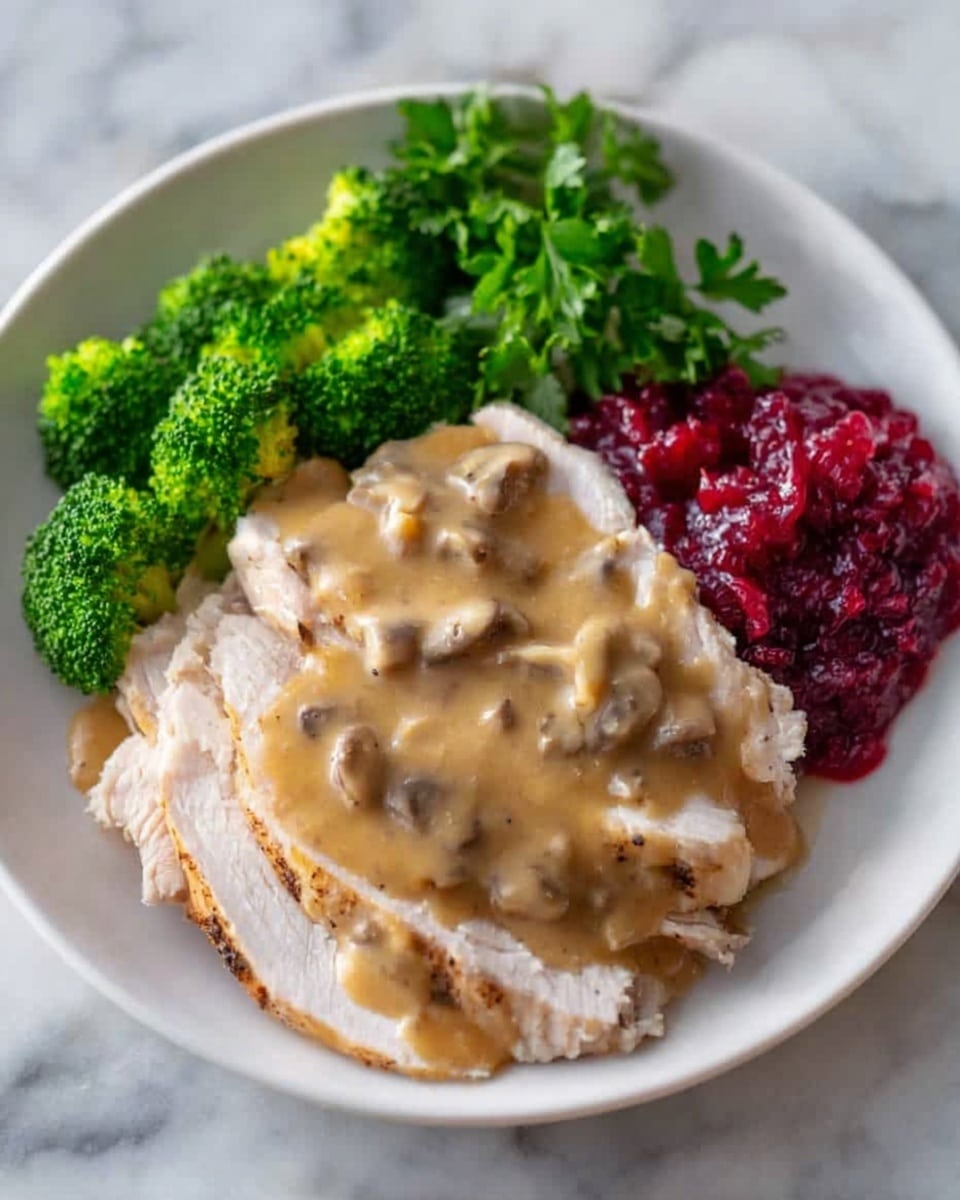
Garnishes
I like to finish my gravy with a sprinkle of fresh chopped parsley or thyme leaves—they add a fresh pop of color and a subtle herbal note that brightens the rich flavors. If you’re going classic, a few whole peppercorns and a pat of butter melted on top make it look dreamy and extra silky.
Side Dishes
This turkey gravy is a match made in heaven with fluffy mashed potatoes, roasted vegetables, and my favorite homemade stuffing. The gravy’s robust flavor brings everything on the plate together beautifully, making your holiday or Sunday dinner feel like a warm hug.
Creative Ways to Present
For special occasions, I like serving the gravy in a charming gravy boat so everyone can ladle to their heart’s content. You can also drizzle it artistically over individual plates or even spoon it into mini ramekins as a dipping sauce for turkey sliders—trust me, it impresses guests and makes things fun!
Make Ahead and Storage
Storing Leftovers
I store leftover gravy in an airtight container in the fridge and always label it with the date. It keeps beautifully for about 3-4 days, and having it ready means you can enjoy turkey sandwiches or leftovers without fuss.
Freezing
Freezing turkey gravy is a lifesaver! Just cool it completely, then pour it into freezer-safe bags or containers. When you thaw it, some separation might happen, but a quick whisk over low heat brings it back to silky perfection without losing flavor.
Reheating
Gently reheat your leftover gravy in a saucepan over medium-low heat, stirring frequently so it heats evenly and doesn’t scorch. If it’s too thick after refrigeration or freezing, just whisk in a bit of broth or water until you get back that creamy consistency.
FAQs
-
Can I make this turkey gravy without the giblets?
Absolutely! If you’re not a fan or want to keep things simple, you can skip the giblets entirely and still achieve rich, delicious gravy just from the turkey drippings and broth. The giblets add traditional flavor and a bit more texture, but it’s optional.
-
What if my gravy turns out lumpy?
Lumpy gravy usually means the flour and fat mixture wasn’t whisked properly before adding liquids or the mixture wasn’t stirred constantly. To fix it, you can strain the gravy through a sieve or use an immersion blender gently to smooth it out. Next time, whisk the roux thoroughly and add broth slowly while whisking constantly.
- How do I keep the gravy from being too greasy?
The key is to let the turkey drippings sit so the fat rises to the top and then carefully skim off most of it before making your roux. Leaving a bit of fat is good for flavor, but too much can make your gravy oily.
- Can I prepare this gravy ahead of time?
Yes! You can make it a day in advance, then gently reheat it when ready to serve. Just keep it covered in the fridge, and rewarm on low with occasional stirring. If it thickens too much, whisk in a little broth or water to loosen.
- Is it necessary to remove the liver from the giblets?
I recommend removing the liver because it can impart a strong, sometimes bitter flavor that not everyone enjoys. The rest of the giblets provide plenty of rich, savory taste without overpowering the gravy.
Final Thoughts
I can’t tell you how often this Turkey Gravy from Roasted Turkey Drippings and Giblets Recipe has saved me from bland meals and elevated celebrations. It’s one of those recipes that feels fancy but is really friendly for home cooks. Once you’ve made it a couple of times, you’ll find your own go-to tweaks and tricks. I truly believe this gravy is what transforms a simple roast turkey dinner into a memorable feast. Give it a try, and I promise your kitchen (and taste buds) will thank you!
Print
Turkey Gravy from Roasted Turkey Drippings and Giblets Recipe
- Prep Time: 10 minutes
- Cook Time: 10 minutes
- Total Time: 20 minutes
- Yield: 15 servings
- Category: Sauce
- Method: Stovetop
- Cuisine: American
Description
This classic Turkey Gravy recipe is made from the flavorful drippings of a roasted turkey, enhanced with a smooth roux and rich chicken broth. Optional giblets add depth and texture, creating a deliciously savory gravy that perfectly complements your holiday turkey or any roasted poultry. Quick and easy to prepare, it’s a must-have for any festive meal.
Ingredients
Turkey Drippings and Giblets
- Drippings from roasted turkey (approx. 2 cups)
- Giblets and neck of uncooked turkey (neck, heart, liver, gizzards, optional)
- Water (enough to cover giblets in saucepan)
Gravy Base
- 1/2 cup all-purpose flour
- 4 cups low-sodium chicken broth (or turkey or vegetable broth)
- Salt and pepper, to taste
Instructions
- Prepare the giblets: Place the turkey neck, heart, liver, and gizzards in a medium saucepan and cover with water. Bring to a boil, then reduce heat to simmer for 1 hour or until meats are cooked through.
- Remove giblets and prepare meat: Use a slotted spoon to take out the giblets and set them aside. Cool slightly, then discard the liver due to its strong flavor. Remove any meat from the neck, discard remaining neck bone, and finely dice giblets and neck meat to reserve for the gravy.
- Collect drippings: After roasting your turkey, carefully pour drippings from the pan into a bowl. Let sit briefly so the fat rises to the top. Skim off most of the fat using a spoon or ladle and reserve about 1 cup of drippings for the gravy.
- Make the roux: In a large saucepan, combine 1 cup of drippings with 1/2 cup flour. Whisk continuously over medium heat until a smooth paste forms and begins to brown to a golden color, signaling the roux is ready.
- Add broth and drippings: Slowly whisk in 4 cups of chicken broth and an additional 1 cup of reserved turkey drippings to the roux.
- Cook gravy and add giblets: Continue whisking constantly for 5 to 8 minutes until the gravy thickens slightly. Stir in the diced giblet meat.
- Adjust consistency: If gravy is too thick, thin with reserved giblet broth or more drippings. If too thin, simmer for about 10 minutes more, or add a cornstarch slurry (1 tbsp cornstarch mixed with 1 tbsp water) and cook until thickened to your liking.
- Season and serve: Season the gravy with salt and pepper to taste. Serve hot alongside your roasted turkey.
- Storage: Store any leftover gravy covered in the refrigerator and reheat gently before serving.
Notes
- The best turkey gravy is made with real turkey drippings for authentic flavor.
- Including giblets adds rich depth and texture, but they can be left out for a simpler gravy.
- Be cautious when skimming fat to avoid too oily gravy.
- If you don’t have giblet broth, chicken or vegetable broth are good substitutes.
- Whisking constantly while making roux and gravy ensures a smooth, lump-free texture.
- Adjust consistency with reserved liquids or cornstarch slurry as needed for perfect thickness.
Nutrition
- Serving Size: 1/4 cup (about 60 ml)
- Calories: 25
- Sugar: 0.3 g
- Sodium: 18 mg
- Fat: 1 g
- Saturated Fat: 0.3 g
- Unsaturated Fat: 0.6 g
- Trans Fat: 0 g
- Carbohydrates: 3 g
- Fiber: 0.1 g
- Protein: 1 g
- Cholesterol: 5 mg

